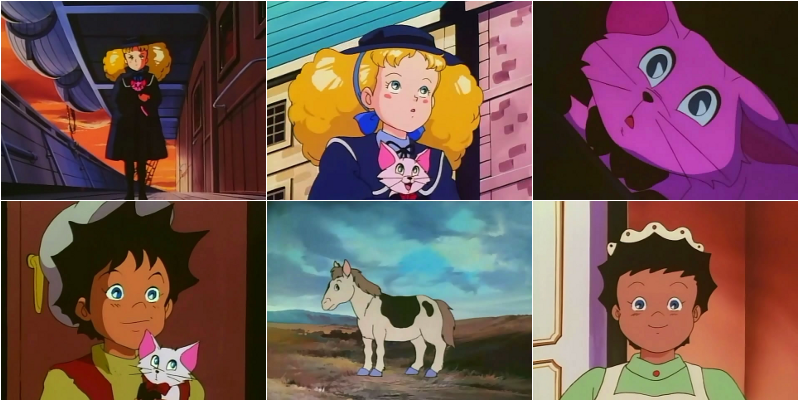
In which Japanese limited animation makes a really bad decision with regards to animal character design.
We’re back to the wonderful world of ORPHANTAINMENT. For those keeping count this is the third confirmed orphan protagonist so far, and the second to come from classic literature. In this case it was coming from NHK, rather than a World Masterpiece Theatre production, and while its heart was in the right place, its hands weren’t.
For those not familiar with the novel by Francis Hodgson Burnett, it involves a orphan girl, Mary Lennox, going to England from India, following the deaths of her parents. She is going to stay with her uncle, Archibald Craven. Both Mary and Archibald have to be softened from their individual grieving by the intervention of the chipper and perky lower classes, in the form of maid Martha, her brother Dickon and gardener Ben Weatherstaff, and by nature. Which comes in the form of the eponymous Secret Garden and a robin.
There was a 1975 BBC adaptation that got repeated when I was a kid, and I remember hating it. Even hearing that opening theme today makes me mad. I mainly hated it because it wasn’t a cartoon or funny. Well, this 1991 version tries to solve that by adding funny animals!
These animals that appear to be attempts at classic American-style cartoon animals, but end up looking like the sort of overly rendered cartoon animals you’d find on cheap greetings cards in the Eighties. You know, before Purple Ronnie came along and changed everything. Chief among these animals is Mary’s cat Patty, whose uncharming antics battle to dominate this episode with Mary’s tantrums. I like cats, but this pink, malformed menace irritated me. Chi, she is not.
When you consider it was the replacement for Nadia: The Secret of Blue Water, it comes up lacking. Though I do wonder if that series’ heroine was an influence on the design choice of making Martha and Dickon non-white characters (perhaps the single interesting artistic choice in the show). But it’s pretty lacking in a vacuum too really. The lack of competence in the production hamstrings it regardless of what show it was replacing. Which probably explains why no-one is interested in it in 2011 (though it did get a box set release in Japan a few years back).
As forgotten as this series is, its replacement in 1992, Oi! Ryoma, languishes in English language obscurity even further. It doesn’t even have an entry in Anime News Network’s encyclopedia.